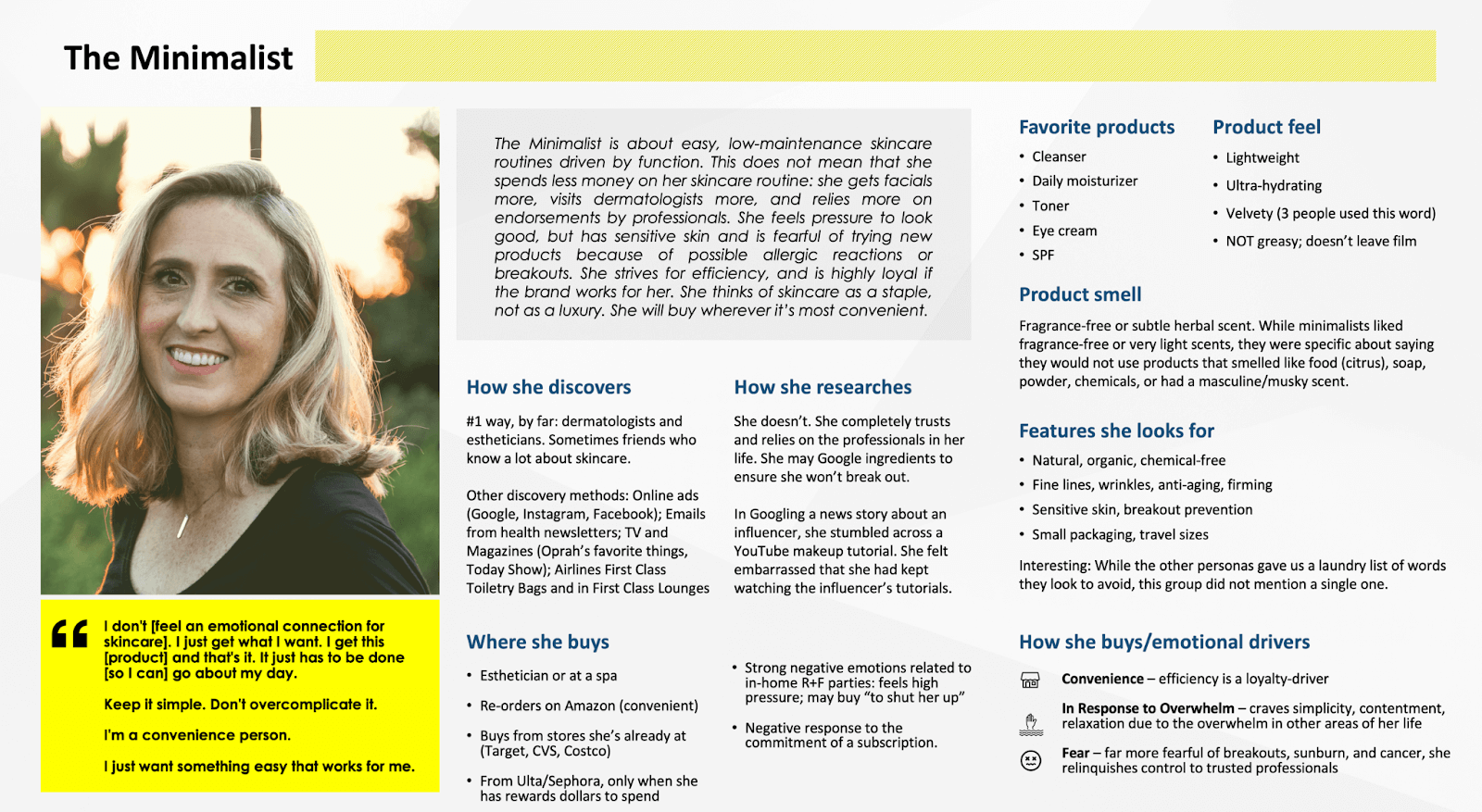Integrated content marketing is essential for any brand that wants to be on the map. It’s an audience-centered strategy that considers where people already are, what they need, and how a brand can offer them a consistently positive experience.
A solid strategy for integrated content marketing helps nurture customer engagement long-term and ensures a broader reach across multiple platforms. By keeping content and business goals aligned and ensuring every resource and asset is in its right place on the editorial calendar, it also improves ROI and makes it much easier to get stakeholders on board.
In this article, I’m diving into how to get started with integrated content marketing and how to create and deliver a cohesive strategy.
What is integrated content marketing?
Integrated content marketing refers to using multiple channels at the same time to reach audiences in the most efficient way possible. It involves displaying a coherent brand identity at every touchpoint, putting out a consistent message, and prioritizing content that is helpful and informative.
Depending on the audience, business goals, and nature of a brand (B2C vs. B2B, industry, size, etc.), its integrated content marketing strategy might include a mix of digital channels like social media or search ads and traditional channels like print or radio.
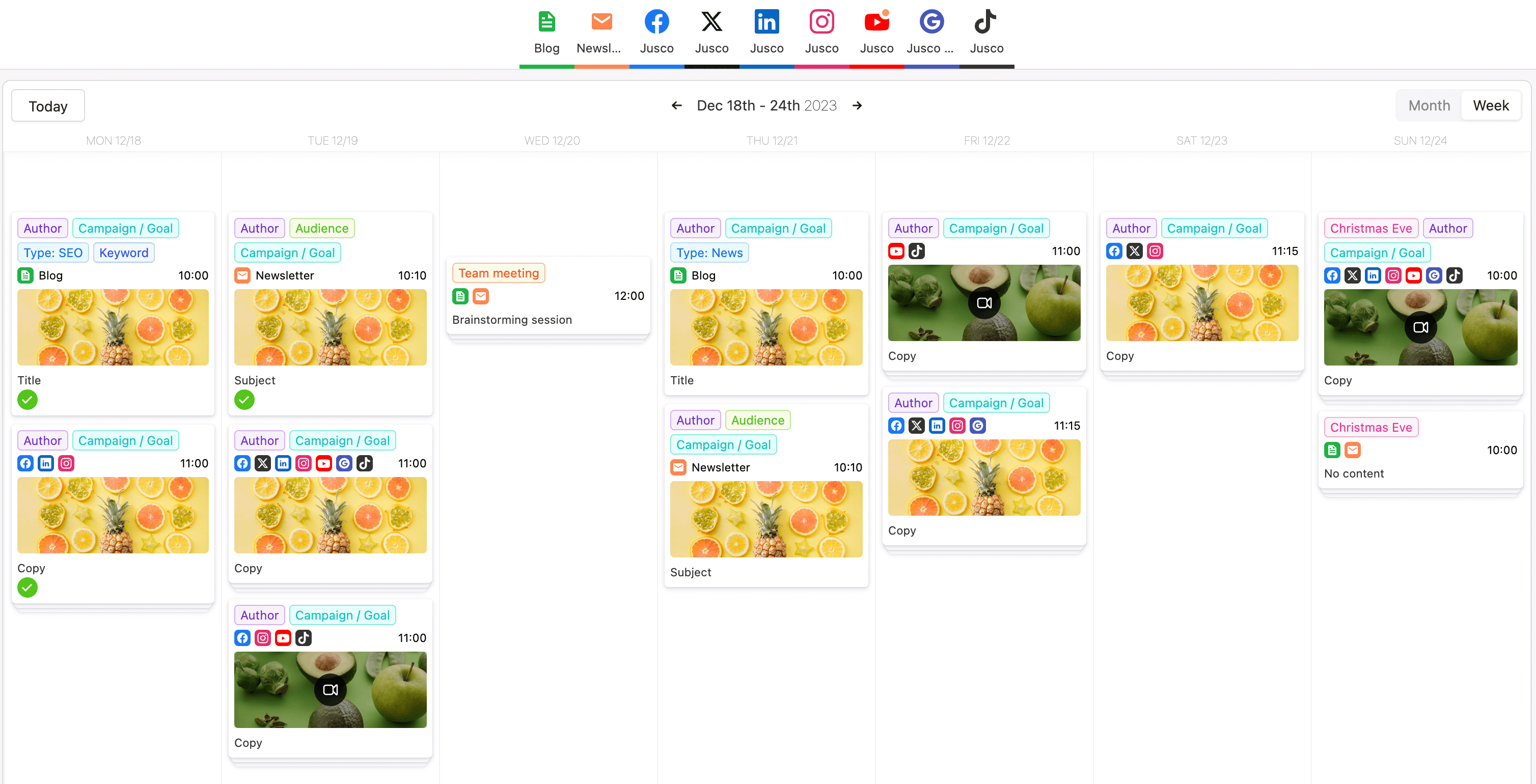

Integrated content marketing calendar in Planable
How to get started with integrated content marketing
Work your way through these steps to flesh out an integrated content marketing strategy that propels your brand to the next level:
1. Lay the groundwork by defining your integrated content marketing goals
A successful integrated marketing strategy starts with achievable objectives. They’re more than a wish list – they include a series of decisions that build your brand universe, step by step. As long as they’re clear and reflect your business goals, they also help your colleagues feel like one team, working towards a common vision.
One of the best ways to keep your content marketing goals realistic is to make them SMART, aka Specific, Measurable, Achievable, Relevant, and Time-bound. For example, it’s hard to measure objectives like “publish more relevant content”. But when you go for specificity, like “Increase blog traffic by 2% until October by posting at least biweekly”, things snap into focus.
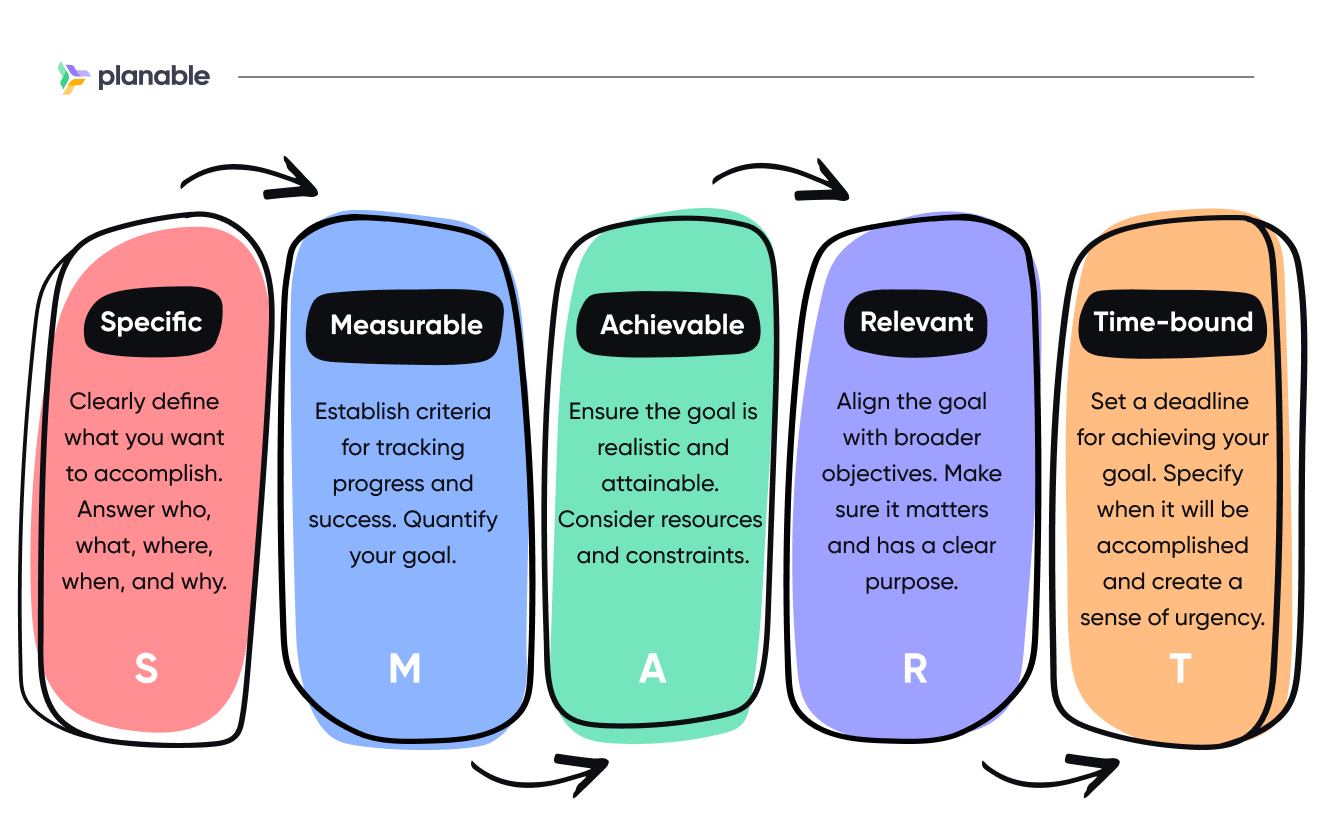

And when it comes to tracking goals, don’t just do it retroactively! Tracking as you go helps you adjust strategies while they’re still unfurling. For the example above, one metric you’ll probably want to track is website views. Chosen metrics depend on what content marketing KPIs you set – more on these later.
2. Nail your message and build a unified brand voice
You know your brand is on the right track when someone in your audience comes across a social post somewhere and a newsletter somewhere else, and they know it’s you. It takes time to build a solid positioning but a consistent brand voice gains people’s long-term trust. When they know why your business does what it does and a unique brand personality shines through every single marketing material, they’re more likely to be on your side.
Once your voice is defined, it’s easier to find the right tone for each channel, as well as the style and vibe for each specific message (down to the shortest piece of copy).
One way to make sure you’re putting out consistent messaging is to use a content management tool. Planable allows you to manage all of your briefs, blogs, newsletters, press releases, and social media posts through a single dashboard. This makes it way easier to keep track of how you’re talking to your target audience (and make real-time tweaks).


Content marketing collaboration in Planable
3. Get to know your audience to find the key to impactful content
And speaking of that target audience, the better you know them, the more you can create content they really vibe with. Take time to gather data that doesn’t just cover demographics.
Consider:
- what their values sound like
- what beliefs they hold
- what they might be aspiring to
When you really zoom in on people’s needs and preferences, you get inspiration for whole pillars of your content marketing strategy. Plus, it also keeps your content authentic and grounded.
Most importantly, research fears and pain points. Compare them for audience segments versus larger groups (for example, Gen Z women who love crafts vs. Gen Z women in general). Each segment has specific pain points and you can speak to them with informed empathy.
The first step for gathering all this data? Definitely internal research. Think beyond the marketing department and get input from everyone who’s in a customer-facing role or works with client info.
A great way to make these fruitful convos happen is to use Planable’s collaboration features. Shared workspaces with detailed permissions, clear feedback, and customizable approval layers make it easier to turn institutional knowledge into actionable insights.


Content approvals in Planable
4. Build out your ideal persona and map out the buyer’s journey
Once the in-house part is covered, you create buyer personas by moving on to external research. Round out demographic info with psychographics and behaviors.
What are your target audience’s preferences? What does their daily life look like? What traditions, holidays, or tiny personal rituals are important to them?
Clarify the audience segmentation – you can work with a couple of ideal personas or more, organizing them by factors like how much they’ve already interacted with your brand.
Always pay attention to how the people in your audience speak. You’ll want to mirror their language in a natural, knowledgeable way. And definitely keep an eye on their media diet, since it can inform everything from your tone to your formats.
A buyer’s journey map clarifies all the touchpoints where people experience your brand, but also what they’re feeling at each level. Touchpoints might include everything from your website and newsletter to ads and mentions.
Map out the actions users take when interacting with them. Look out for impediments and unmet needs, then tailor your content to respond to these needs and streamline movement between touchpoints.
5. Choose the right channels for your message
The fact that you’re drawing up an integrated content marketing strategy does not mean you have to be everywhere. Quite the contrary. While it’s a good idea to cast a wide net, focus your content creation efforts on the places your target audience already frequents.
First up, consider what content looks like for owned, earned, paid, and shared channels.
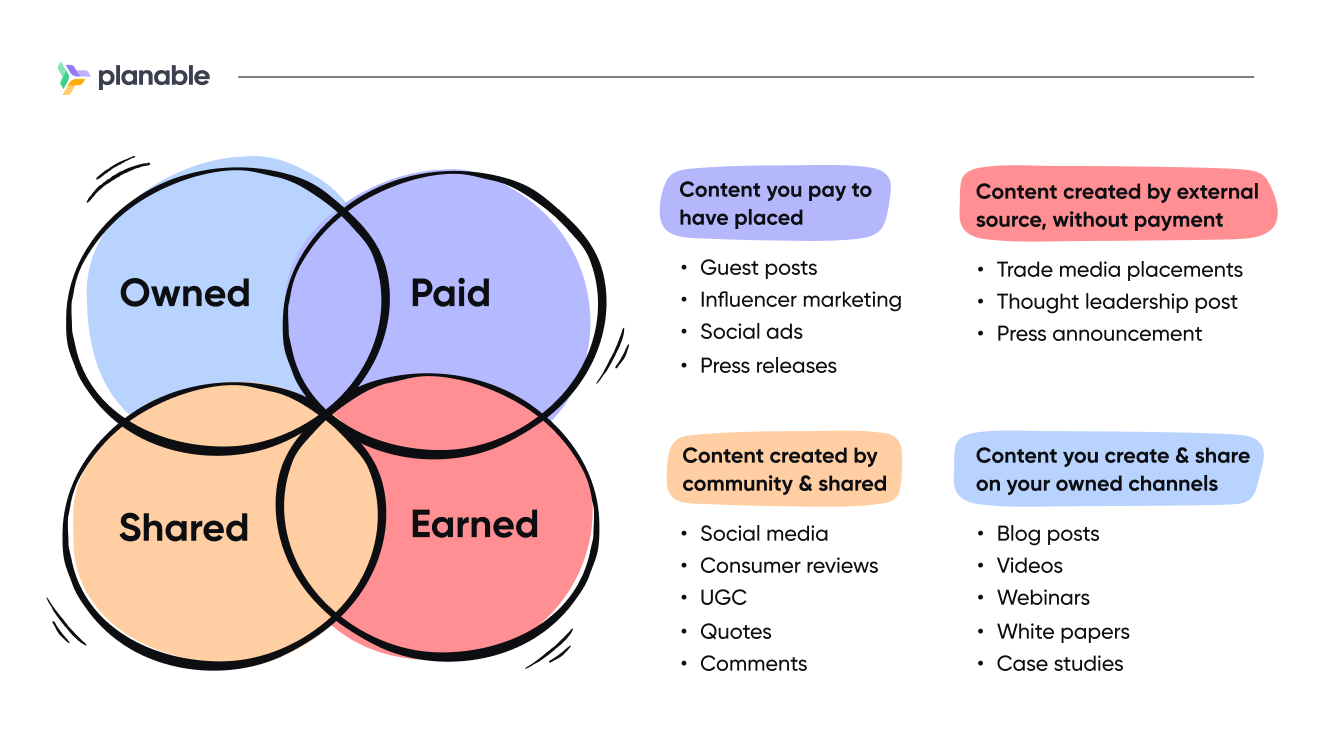

If you’re just starting out, you’ll probably want to focus on your owned channels first. That’s places like the website, the newsletter, and your brand’s own social media pages.
Other questions worth asking:
- Do your chosen channels align with your goals?
- Are they realistic for your budget?
- Does your target audience already spend time there?
Whatever combo of marketing channels you choose, it’s super simple to streamline your content for all of them by using Planable. This straightforward content marketing tool helps you collaborate on, approve, schedule, and adapt content for eight of the top social media platforms. And, for writing that goes beyond socials (e-books, white papers, blogs, emails, etc.), Planable’s Universal Content gives you all the tools you need for rich-text content.
6. Create impactful, valuable content that converts
The first rule of high-converting content? Define the right audience. Once you have that covered:
- Make sure your content is genuinely helpful. Keep it informative and reflect the search intent.
- Provide value upfront. Give people answers first, add supporting details, and then place the CTA.
- Test different calls to action. A good CTA is clear, brief, and aligned with your goals.
- Dedicate time to good formatting. Bullet points, line length, fonts, headings, images – the works.
- Make it clear how you respond to pain points. Your brand should be the obvious solution.
- Leverage your brand voice. When it shines through, people perceive you as reliable and familiar.
- Consistently track your content. Lean into A/B testing. See what works and adjust accordingly.
You can tweak and improve text for multiple platforms via Planable’s Rewrite with AI feature. Prompts like “Expand concept” and “Make it shorter” add or remove details while sticking to the format, context, and general idea of your caption. “Surprise me” lets you switch up the tone of voice, while “Custom instructions” does exactly what it says on the tin. Ask the writing assistant to add jokes, find hashtags, or whatever else you can dream up.
7. Experiment with different content formats for engagement
An integrated content marketing strategy includes materials that respond to people’s needs at every touchpoint. When your ideas resonate, more of your audience travels through the marketing funnel from awareness to consideration to the decision stage. More people are also likely to stick around for the long run or recommend your brand to friends (the loyalty/retention/delight stage).
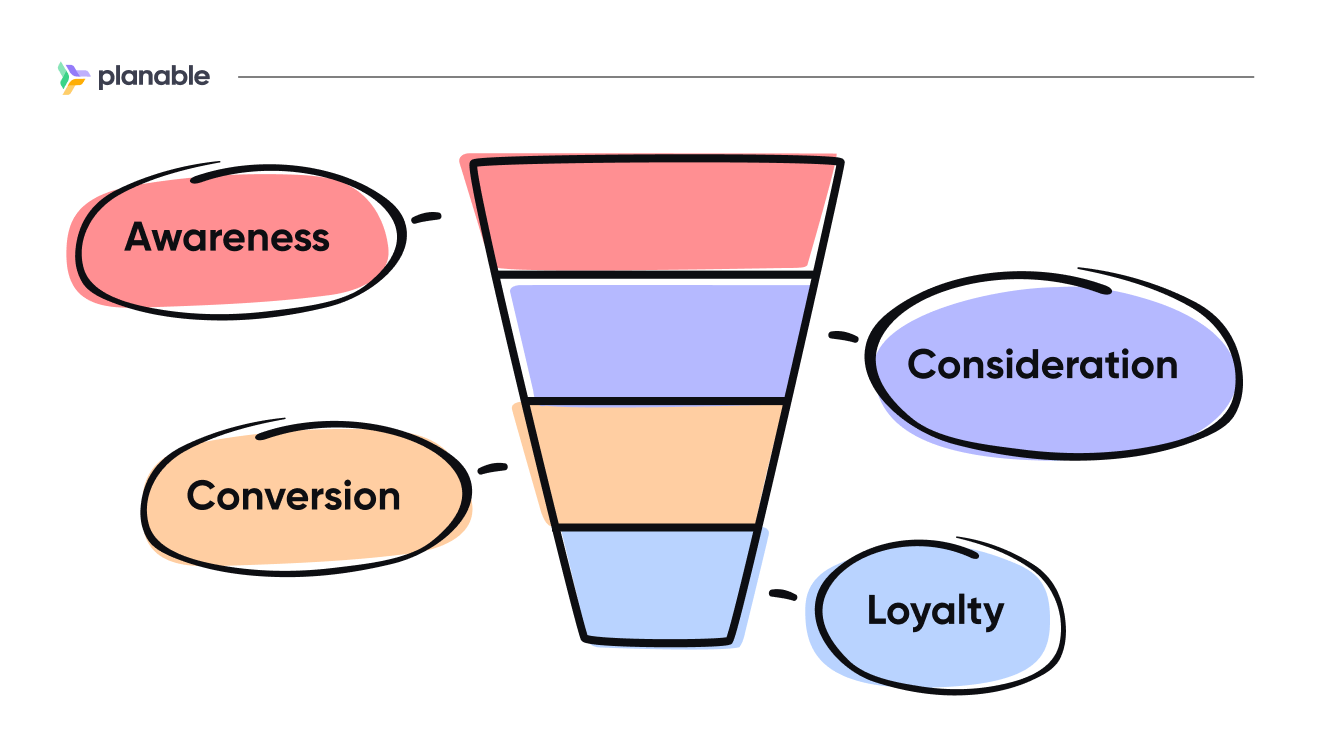

Adapt your consistent message for every step of the buyer’s journey and match each step with the right format for your brand:
- Content for the awareness stage puts you on the map. Think blogs, social posts, ads, infographics, podcasts, and lead magnets.
- Content for the consideration/interest stage explains why the solution to an already acknowledged problem is your brand, specifically. Explore white papers, checklists, newsletters, tutorials, and special offers.
- Content for the conversion/decision stage paints a clear picture of what it’s like to be your customer. Go for free trials, FAQs, comparison charts, and case studies.
- Content for the loyalty stage keeps your audience from switching to a competitor’s brand. Include trend reports, product updates, or early access to features or webinars.
8. Set and analyze key performance indicators (KPIs)
KPIs tell you if your content is doing its job in relation to your business goals. They also provide hard data when it comes to justifying a marketing budget. Most importantly, they guide your process of optimizing an integrated marketing strategy in real time.
KPIs include metrics (numbers like page views or a bounce rate) but they’re goal-oriented, putting these numbers in context for your brand specifically (generated leads within a month, follower growth for a specific page within a quarter, etc.).
Follow these steps to zero in on the most relevant KPIs for your content strategy framework:
- Make a list of your business goals (e.g. increase sales)
- Map goals onto marketing objectives (increase website traffic)
- Take stock of assets that support these objectives (blog posts, landing pages, etc.)
- Nail down KPIs that show their performance (monthly website views, conversion rates, etc.)
You can also take an asset-first approach and work your way back. Focus on the types of content you’re already good at, browse a list of appropriate KPIs, and treat these materials as your flagship content. All good as long as they support your goals.
Planable’s analytics features can help you make sure your data-driven decision-making is always on point. You get actionable insights galore via fast reports and an in-depth look at the impact of every single piece of content.
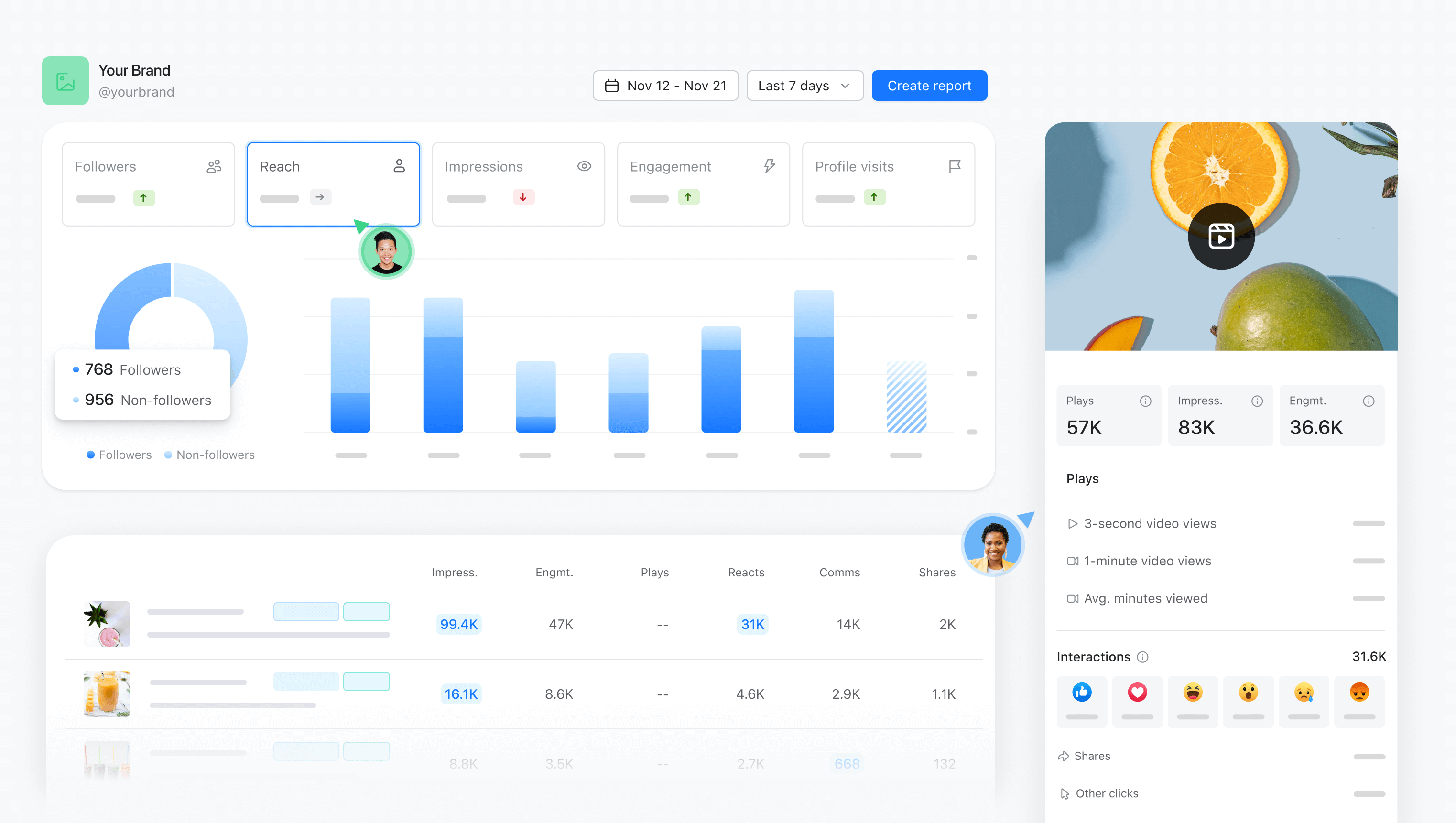

Content analytics dashboard in Planable
9. Measure success and optimize your integrated content strategy
Every marketing material needs to be linked to a business goal and a metric that lets you track its impact. Staying on top of tracking means you don’t waste your efforts and resources on types of content that underperform. You get a clear picture of what you need to replace, what you need to improve, and what content gaps need to be filled. Incorporating a growth marketing strategy ensures that your content evolves with measurable results in mind, driving scalable and sustainable growth.
Plenty of marketers nominate performance measurement as the #1 crucial element of a good integrated content strategy. You should also consider attribution: which piece of content exactly was the one that drove a conversion home? To step back and see the bigger picture, schedule regular content reviews with the whole team.
When it comes to optimizing, A/B testing still rules supreme. But I’d also encourage you to check out optimization tips for every specific format you’re using.
You’re likely to have to track different sets of KPIs for various projects to achieve your goals. Planable’s analytics features are great at keeping all this data organized. Social media stats come with top-performing content helpfully highlighted, so you can easily extract actionable insights from your greatest hits.
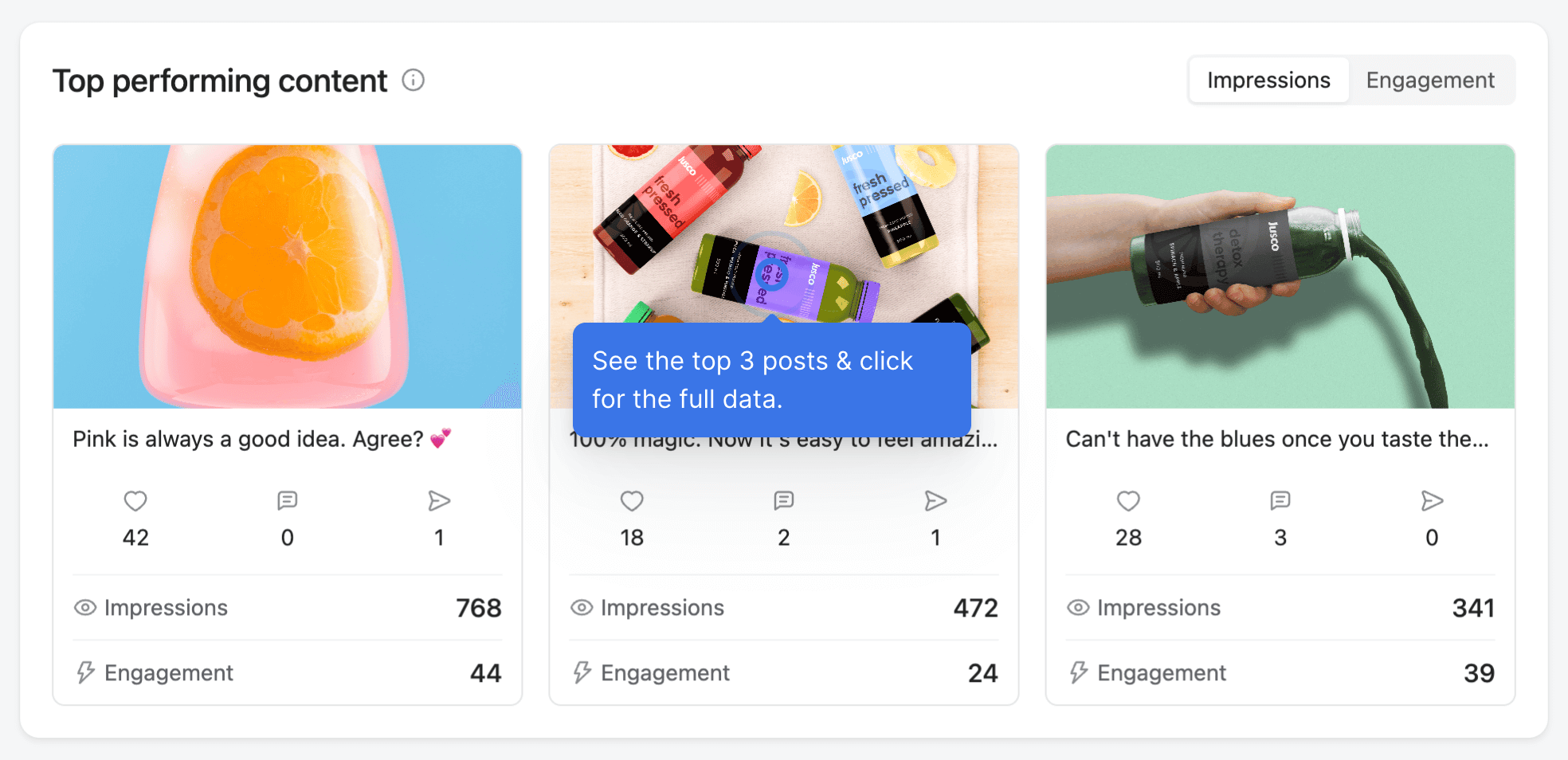

Top posts analytics in Planable
Integrated content marketing with Planable: streamline your strategy
With Planable, it’s an absolute breeze to implement an integrated content marketing strategy that really delivers. Social media managers and digital creators use it to plan, collaborate on, and schedule posts seamlessly to the most popular social media platforms, including Facebook, Instagram, LinkedIn, and TikTok. They manage all their content through a single dashboard that holds social media posts but also blogs, newsletters, press releases, ads, and more to streamline content creation, stay on-brand, and achieve their goals.
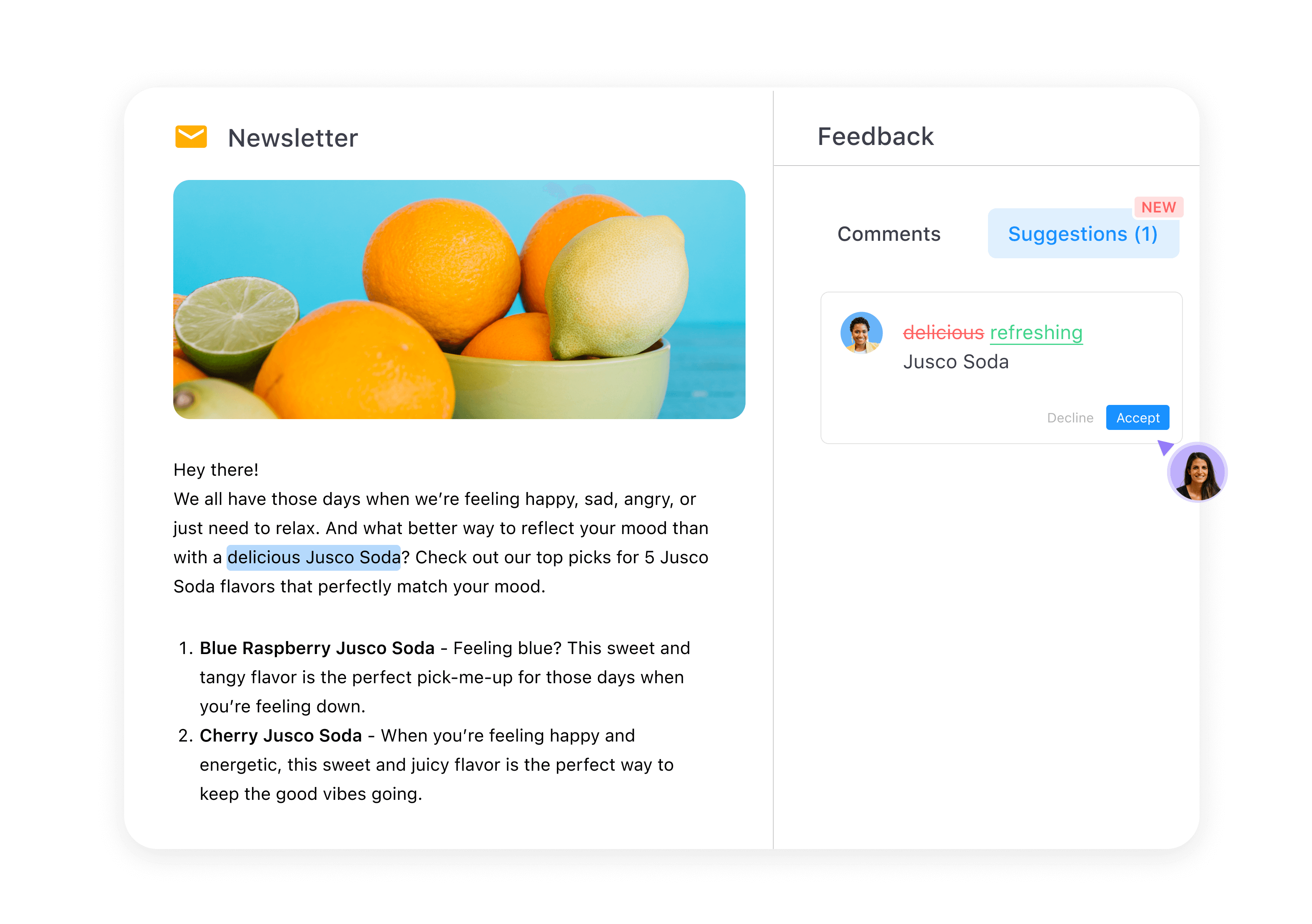

Team collaboration on a newsletter in Planable
On top of this, Planable’s collaboration features save heaps of time on feedback and maintaining an edit history, while approval from stakeholders (internal or external) takes a single click. Last but not least, its analytics features help marketers get an in-depth look at the relationships between their audiences and their content, to ensure their strategies truly deliver.
Ready to amplify your brand’s voice with integrated content marketing?
As long as you take time to understand your audience, craft a consistent message, and define realistic goals, your integrated content marketing strategy is already on the right track. With Planable, you can optimize not just the content itself, but the whole process. From planning and ideation to measuring performance, it’s got everything you need to reroute your efforts from endless back-and-forths over email to smooth content management. So, don’t hold off – try it for free.
Irina is a freelance senior copywriter & content writer with an advertising agency background. If she’s not rummaging for good synonyms, she’s probably watching a sitcom or listening to radio dramas with plucky amateur detectives. She loves collage, doing crosswords on paper and shazamming the birds outside her window.


